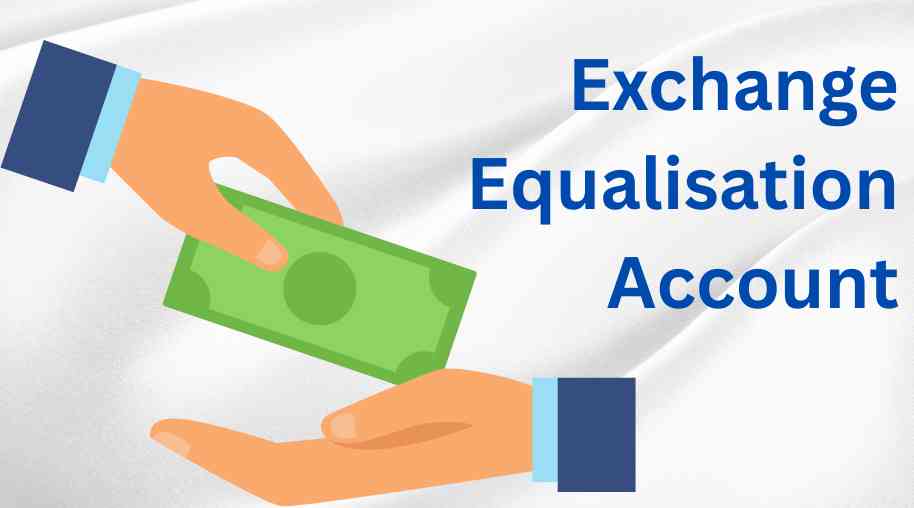EEA Full Form-Exchange Equalisation Account
by Shashi Gaherwar
0 2094
Exchange Equalisation Account (EEA): Role, Mechanism, and Impact on Currency Stability
Introduction
Currency stability is a key factor in maintaining economic confidence and international trade. Many nations use specialized financial mechanisms to manage exchange rate fluctuations and protect their currency value. One such mechanism is the Exchange Equalisation Account (EEA), a government-operated fund used to regulate exchange rates and stabilize national currency in the foreign exchange (forex) market.

This article explores the concept, working mechanism, importance, and impact of the Exchange Equalisation Account in global monetary systems.
What is the Exchange Equalisation Account (EEA)?
The Exchange Equalisation Account (EEA) is a government-controlled fund designed to stabilize currency value and manage exchange rate fluctuations by intervening in the foreign exchange markets. It is typically operated by a nation’s central bank or treasury department and financed through foreign exchange reserves, gold reserves, or other monetary assets.
The primary purpose of the EEA is to prevent excessive volatility in exchange rates by buying or selling foreign currencies as needed. This intervention helps protect a country's economic stability, trade competitiveness, and investor confidence.
How Does the EEA Work?
The Exchange Equalisation Account functions through a series of currency interventions based on macroeconomic conditions. The process typically involves:
- Accumulation of Foreign Reserves
- The government maintains a pool of foreign exchange reserves, gold, and other assets within the EEA.
- These reserves are used strategically to manage currency fluctuations.
- Currency Buying and Selling
- When the national currency appreciates too much, the EEA sells local currency and buys foreign currencies to weaken the local currency.
- When the national currency depreciates excessively, the EEA buys local currency using its foreign reserves to support its value.
- Sterilization Measures
- To prevent inflationary or deflationary pressures, central banks often conduct monetary policy adjustments alongside forex interventions.
- This ensures that EEA interventions do not disrupt overall economic stability.
- Coordination with Monetary Authorities
- Central banks and treasury departments coordinate EEA operations with interest rate policies and foreign trade regulations.
- They ensure that currency interventions align with broader economic goals.
Importance of the Exchange Equalisation Account
The EEA plays a critical role in economic and financial stability, particularly in economies exposed to foreign exchange volatility. Key benefits include:
- Stabilizing the National Currency
- Prevents sharp appreciation or depreciation of the domestic currency.
- Enhances economic predictability for businesses and investors.
- Supporting International Trade
- A stable currency benefits exporters and importers, ensuring predictable pricing.
- Prevents sudden losses in trade competitiveness due to exchange rate fluctuations.
- Controlling Inflation and Deflation
- Excessive depreciation of a currency can lead to imported inflation.
- By stabilizing the exchange rate, the EEA helps manage inflation risks.
- Boosting Investor Confidence
- A well-managed forex policy reassures foreign investors and financial markets.
- Reduces the risk of speculative attacks on the currency.
- Enhancing Monetary Policy Efficiency
- Complements interest rate policies in controlling money supply and inflation.
- Prevents excessive capital outflows or inflows that could destabilize the economy.
Countries Using Exchange Equalisation Accounts
Several countries operate Exchange Equalisation Accounts as part of their monetary and forex policy frameworks. Some notable examples include:
- United Kingdom
- The UK established its Exchange Equalisation Account (EEA) in 1932 to stabilize the British pound (GBP) and manage gold reserves.
- United States
- The U.S. Exchange Stabilization Fund (ESF), created in 1934, performs a similar role in supporting the U.S. dollar (USD) and foreign exchange reserves.
- Japan
- Japan’s Foreign Exchange Fund Special Account (FEFSA) is used by the Bank of Japan to intervene in currency markets and regulate the yen.
- India
- The Reserve Bank of India (RBI) utilizes foreign exchange reserves to intervene in markets to maintain rupee stability.
Challenges of Managing an Exchange Equalisation Account
Despite its advantages, operating an Exchange Equalisation Account presents challenges, including:
- Market Speculation Risks
- Forex traders and speculators may anticipate government interventions and adjust their positions accordingly, making interventions less effective.
- High Financial Costs
- Maintaining foreign exchange reserves and conducting large-scale interventions can be financially expensive.
- If mismanaged, it can lead to losses for the central bank or government.
- Global Economic Influences
- External factors like interest rate hikes in major economies (e.g., U.S. Federal Reserve actions) can diminish the effectiveness of domestic interventions.
- Risk of Currency Wars
- Aggressive forex interventions can trigger retaliatory measures from other nations, leading to competitive devaluations and economic conflicts.
Future of Exchange Equalisation Accounts
With the rise of digital finance, blockchain technology, and AI-driven economic forecasting, the future of EEA management is evolving. Key trends include:
- AI and Machine Learning for Forex Predictions
- Central banks are increasingly using AI to predict currency fluctuations and determine optimal intervention strategies.
- Blockchain for Transparent Forex Management
- Governments may adopt blockchain-based forex reserves tracking to enhance transparency and efficiency.
- Greater Coordination Among Central Banks
- Increased global monetary cooperation can help mitigate risks associated with competitive devaluations and currency wars.
The Exchange Equalisation Account (EEA) is a vital tool for governments and central banks in managing exchange rate stability and foreign reserves. By strategically intervening in forex markets, EEAs help protect economies from excessive volatility, inflation risks, and investor uncertainty.
However, operating an EEA requires careful economic planning, fiscal discipline, and coordination with global financial policies to ensure its effectiveness. As financial technologies advance, the role of EEAs is likely to evolve, making exchange rate management more precise and efficient in the future.
Further Learning Resources
If you’re passionate about building a successful blogging website, check out this helpful guide at Coding Tag – How to Start a Successful Blog. It offers practical steps and expert tips to kickstart your blogging journey!
For dedicated UPSC exam preparation, we highly recommend visiting www.iasmania.com. It offers well-structured resources, current affairs, and subject-wise notes tailored specifically for aspirants. Start your journey today!

Share:








Comments
Waiting for your comments